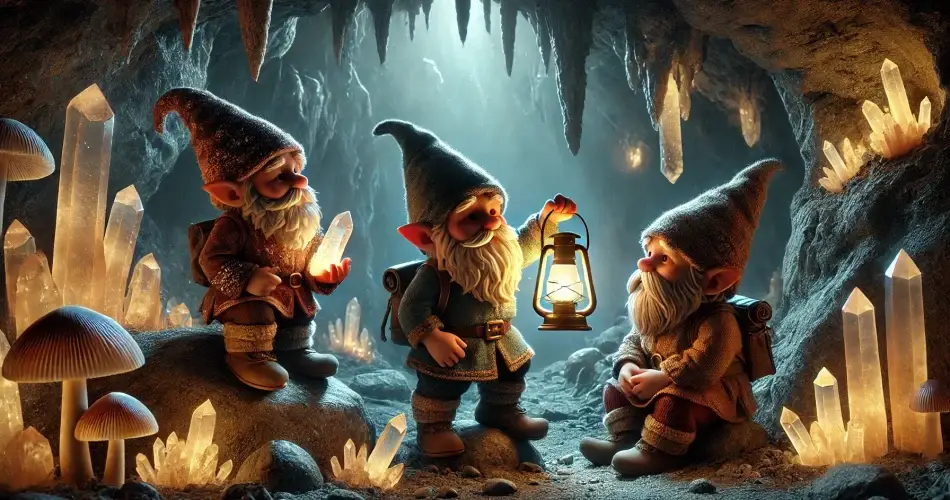Gnomes—those little mischievous creatures that appear in fairy tales and as garden ornaments—have long been a part of European Mythology and folklore.
Often depicted as small, bearded beings with pointy hats, gnomes are underground creatures that guard natural treasures and help plants to grow. However, there’s much more to these mysterious creatures than just their quirky appearance.
Let’s dive into the fascinating world of gnomes. We’ll discuss everything you need to know, from their history to their powers and symbolism in European culture.
Key Takeaways
- Gnomes originate from the ancient German legend of the Bergmännlein, or mythical mineralogical demon.
- In Norse Mythology, Gnomes were known as Nissies.
- Gnomes are guardians of the hidden treasures in the earth.
- Gnomes served as a symbol of anti-communist resistance in Post WW2 Poland.
What are Gnomes?
Gnomes are a legendary class of nature spirits believed to live in small communities underground or in deep, dark forests. These creatures are popularly portrayed as gardeners (garden gnomes) who come out of the ground at night to help around the garden by taking care of crops, removing weeds, and protecting the plants from pests.
Gnome is derived from the Latin word genomes, which means Earth spirit or Earth dweller. They have appeared in many fairy tales, including Snow White and the Seven Dwarfs and The Three Little Gnomes in the Forest.
Like the dwarfs of Norse mythology, gnomes are also associated with the underground and underworld. They are also believed to have magical powers that they use to help or punish people, depending on how they are treated.
History of gnomes
The history of gnomes can be traced back to ancient Rome when people placed little statues of their favourite gods around the house to provide protection. Among these miniature statues was that of Pariapus, the Roman god of fertility, who is said to protect livestock, vegetables, and fruit plants.
Although these miniature statues are not the same as what we know as gnomes today, their protective role is still associated with gnomes.
Gnomes, as they are known today, were introduced in the 16th century by Parecelcius (Theophrastus von Hohenheim), a medieval Garman alchemist. These creatures were inspired by the ancient German miners’ legend of the Bergmännlein, a mythical mineralogical demon.
According to Garman folklore, the Bergmännlein were humanoid spirits miners often encountered on their mining trips. These creatures were laughing pranksters that could be a nuisance but could also bless miners by leading them to a rich vein of silver or gold.
The original gnome figurines were made from wood in the early 19th century; however, as the demand grew, they were cast in terra cotta and porcelain.
These early gnomes depictions were not only associated with gardens. Fishermen, hunters, blacksmiths and carpenters also had little gnome statues that were believed to come alive at night and help with work.
Read Also:
Meaning of Owls in Mythologies around the world.
English Legend of Herne the Hunter
Vrykolakas: Undead Vampires of Greek Mythology.
What do gnomes look like?
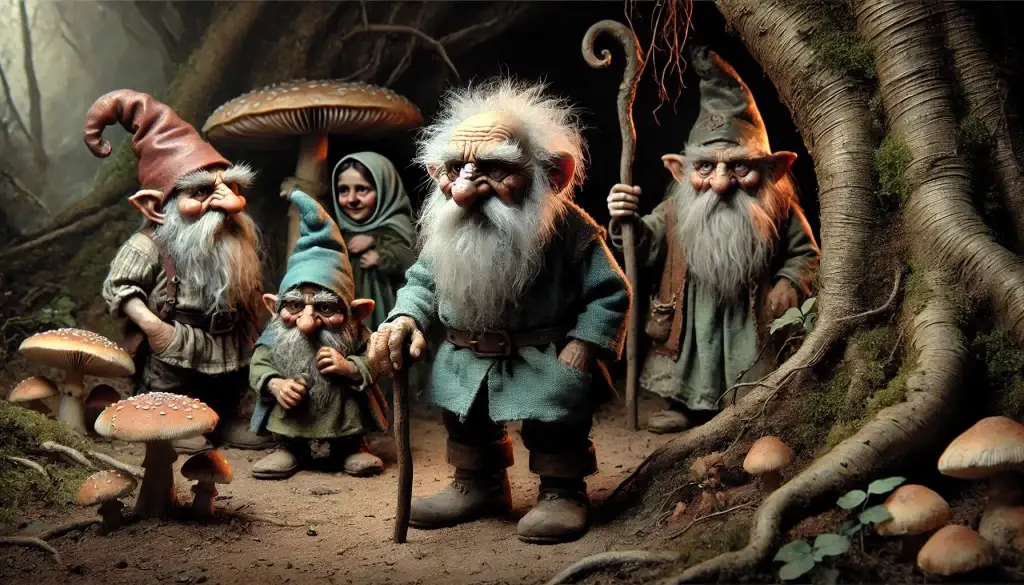
According to a publication released by Paracelsus in 1567, gnomes are only about 18 inches in height with body parts that were proportional to their small stature. Another medieval German writer, Agricola, describes the gnomes as about 27 inches tall.
In other Garman writings, gnomes are described as small grumpy men with hunchbacks. They were significantly smaller than dwarfs and had very large noses. Like dwarves, gnomes have a lot of facial hair and slightly pointed ears (not as pointed as the dwarves). Also, the hair colour of gnomes is often grey or dull sliver, while their eyes are mostly paler shades of green, blue, or grey.
In popular culture, gnomes are portrayed as cute little men wearing large, pointed red hats. In the Harry Porter series, the gnomes are depicted with very large heads and brown skin, making them appear like potatoes with legs.
Female gnomes exist but rarely emerge from the ground. They are slightly smaller than the males and do not have much facial hair.
What powers do gnomes have
According to Paracelsus, gnomes can move through the earth like fish can move through water. They also helped miners by depositing rich veins of precious metals into the ground.
Although they live underground, these creatures are believed to have great eyesight and amazing speed.
Finally, gnomes are master manipulators of the earth. They use this power to carve out underground passageways and tunnels that allow them to appear and disappear at will.
What do gnomes represent (Spiritual meaning of gnomes)
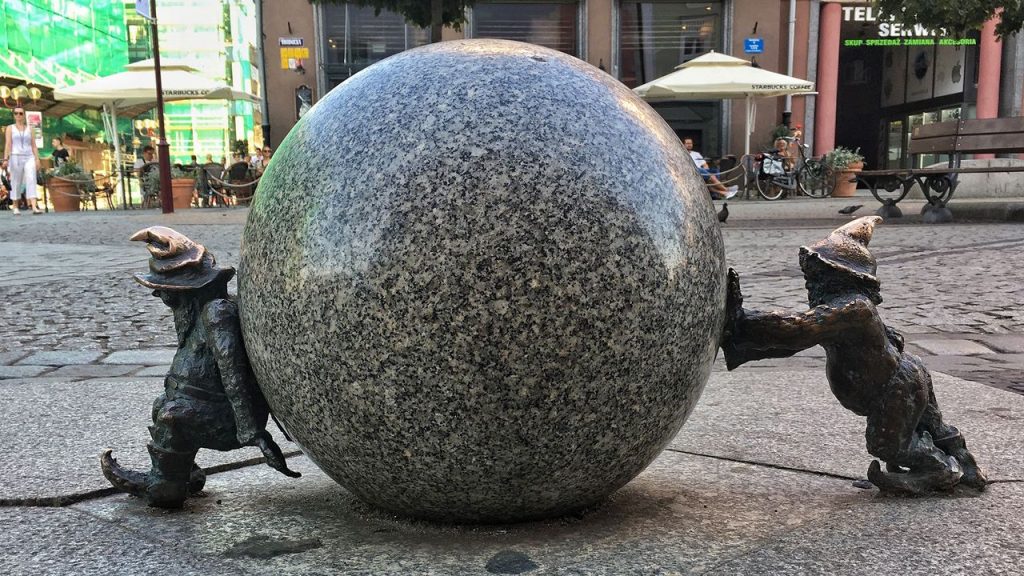
Gnomes represent good luck. According to the old German stories, gnomes will lead miners to gold deposits by tapping at the other side of the tunnel walls. Miners have reported following these subtle taps to discover rich gold and other precious metals deposits.
Spiritually, gnomes are associated with the faculty of mind, reason and knowledge. In ancient Rome, small statues similar to gnomes were believed to provide spiritual protection against evil spirits that come out at night to spoil harvests.
In the 1980s, gnomes were used as a symbol of resistance against Poland’s communist government. They served as the mascot of the Orange Alternative, a movement that used ridicule to protest against the Soviet regime. Images of gnomes were drawn on walls, and small statues were placed in specific locations around the city.
Gnomes also symbolize swinging. Swingers place these little statues in suggestive positions to “send out the message” to other swingers that might be nearby.
Types of Gnomes in Mythology
All gnomes might look similar to us; however, in the gnome world, there are various types of gnome races, each with unique characteristics and attributes. We’ll discuss three of the most popular types of gnomes.
1. Garden Gnomes
These are the most recognizable gnomes today. They live in gardens and are usually depicted with long pointy hats and a cheerful demeanour.
These types of gnomes come out at night to help around the garden. It is believed that if they come in contact with sunlight, they’ll be turned into the stone statues we see in gardens.
2. Forest Gnomes
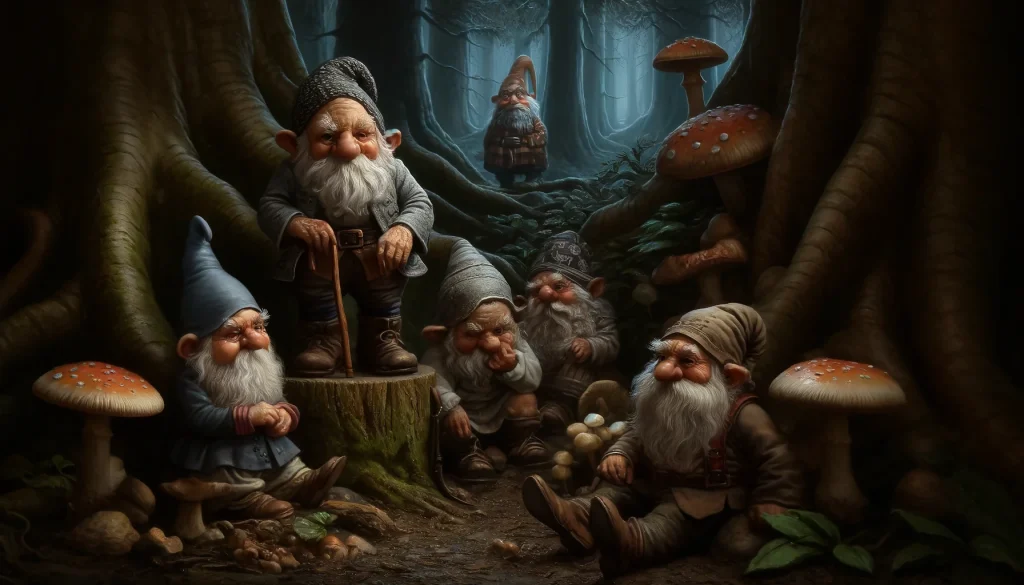
These types of gnomes are believed to live in the darkest part of the forest. They are very shy and try to avoid human contact. Forest gnomes are in harmony with nature, like the garden gnomes; they take care of the forest and everything within it.
Forest gnomes are not affected by sunlight. In some legends, forest gnomes are more confrontational and act as guardians of the forest.
3. Underground/ Tunnel Gnomes
These gnomes rarely come out of the ground, even at night. They spend their time looking for treasures in the ground.
Sometimes, these gnomes help miners by directing them to gold deposits. Other times, they play practical jokes by pelting miners with rocks.
How to Attract Gnomes to Your Garden
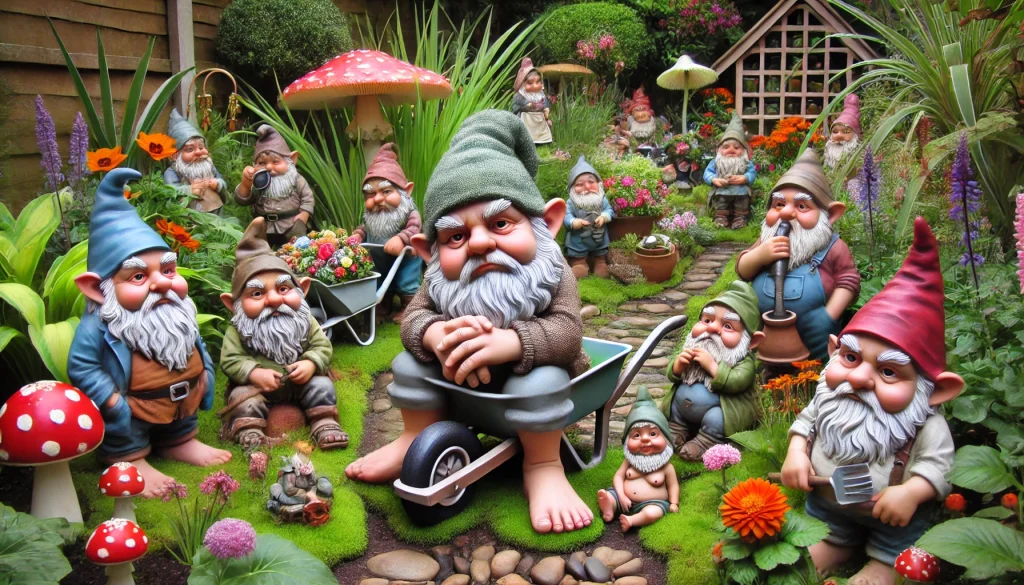
If you have a garden and want to attract some of these little creatures into the area, here are some tips to help you.
Plant a lot of flowers.
Gnomes are big fans of vibrant flowers and lush greenery. They love to play around with these plants and use the flowers to decorate their cute little homes. Recommended flowers include marigolds, daisies and ferns.
Install Tiny Accessories
Tiny accessories like benches, furniture, and bridges make it very easy for gnomes to settle into your garden. Install these accessories in strategic locations around your garden to attract gnomes.
Place Shiny objects around your garden.
As keepers of treasures, gnomes are naturally attracted to shiny objects. Strategically placing shiny pebbles or wind chimes in your garden will force these little creatures into your garden to investigate.
Integrate small animals into your garden.
Gnomes have a strong connection with small animals like birds and rabbits. If you are able to attract these animals to your farms, you can be sure that the gnomes will soon follow.
Are gnomes evil?
The original gnomes were harmless creatures that did not go out of their way to cause any trouble to humans. Although they played pranks, these pranks were not designed to cause any major damage.
However, during the Victorian era, European fairy tales started growing darker, and so did the mythical creatures depicted in these tales. Gnomes and other small woodland creatures were associated with curses and melancholy.
Despite the occasional dark gnome stories, they never fully crossed into the realm of evil in the same way that other mythical creatures, like goblins or ogres. In modern times, gnomes have largely reclaimed their reputation as fun and whimsy creatures.
So, are gnomes evil? Not really. Like many mythological creatures, their morality depends on the story being told.
Gnomes in Norse mythology
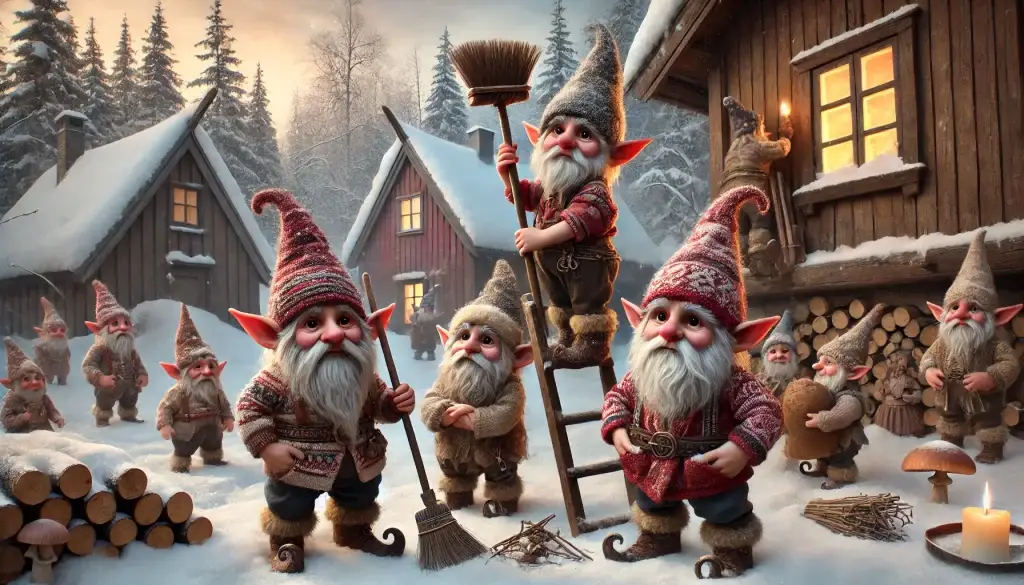
In Norse mythology, a different type of Gnome exists. These gnomes are called Nissies. The Nissie is described as a small, elderly man no taller than a few feet, with a long white beard and a pointed hat. Despite their small statues, these creatures have superhuman strength.
Nissies live with humans and maintain a mutually beneficial relationship. Like the garden gnomes, Nissies help complete chores around the house, watch over farm animals, and ensure the farm’s prosperity.
In return, the Nissie demands respect and offerings, particularly a bowl of porridge with butter during winter. If a family neglected this tradition or insulted the Nisse somehow, they could become vengeful. There are stories of Nisse killing farm animals in a fit of rage if they felt they were mistreated.
What is the Difference between Gnomes and Halflings?
Like gnomes, hafflings are a fictional race from folklore. They are believed to be about half the size of regular humans and are not as stocky as gnomes or dwarfs. Also, Although halflings are considered lucky, they are not particularly attracted to treasures like gnomes.
Halflings share the same characteristics as humans and are quite adept at fitting into human communities. Unlike gnomes, they are very friendly and dress similarly to human children.
Gnome art
Gnome art has evolved from humble origins in folklore to become a beloved form of creative expression. Historically, medieval and Renaissance art depicted gnomes as small, earthy creatures. However, around the 19th century, gnomes became widely popularized in decorative arts, particularly through the advent of garden gnomes in Germany.
Gnome sculptures, typically made from clay or ceramic, adorned gardens as symbols of good luck and protection.
These statues, characterized by their pointed hats and long beards, became iconic in European households, celebrating the mythological connection between gnomes and nature.
Over time, gnome art expanded to include paintings, illustrations, and digital media, often capturing their whimsical and mysterious nature.
